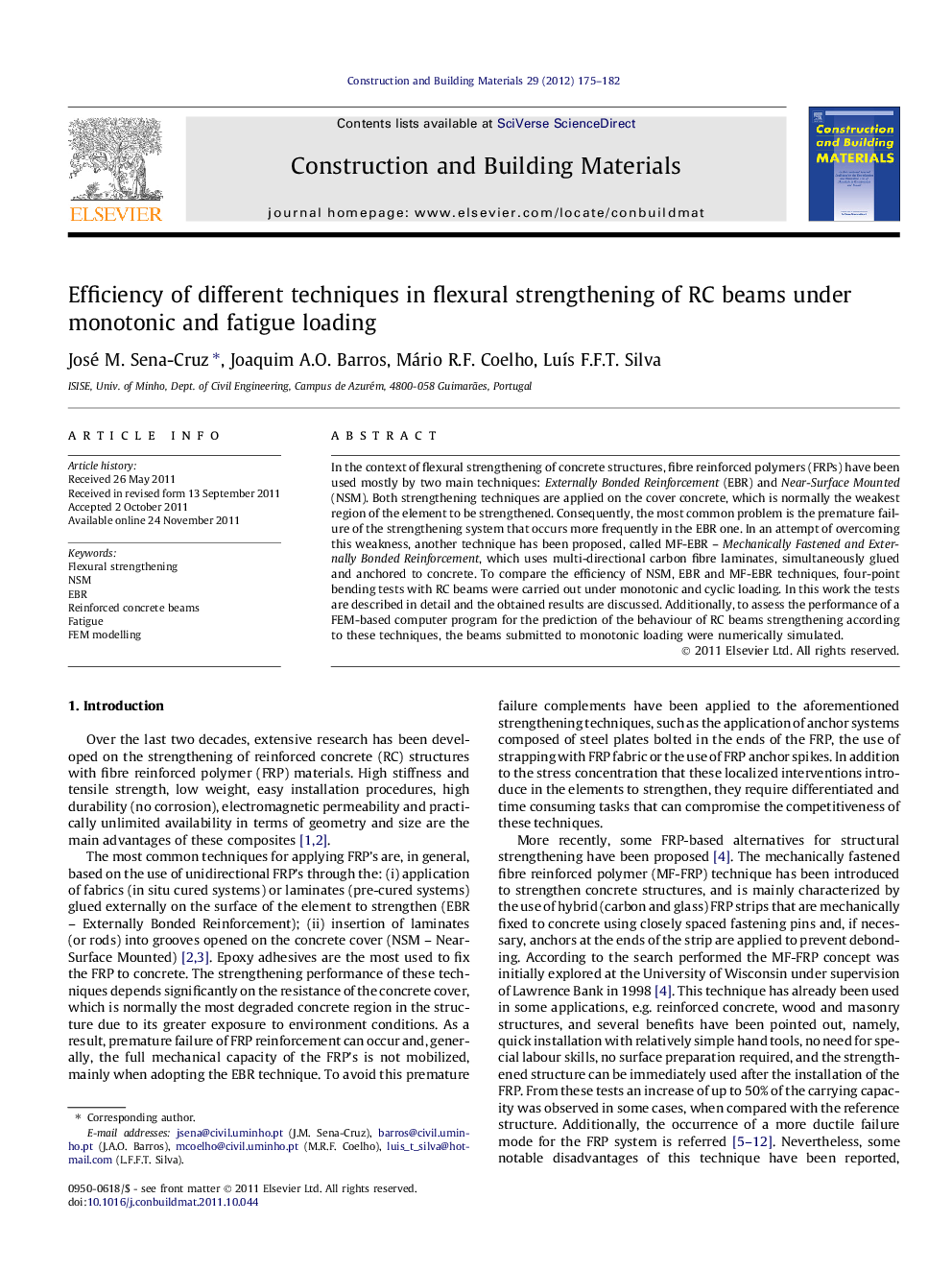| Article ID | Journal | Published Year | Pages | File Type |
|---|---|---|---|---|
| 259058 | Construction and Building Materials | 2012 | 8 Pages |
In the context of flexural strengthening of concrete structures, fibre reinforced polymers (FRPs) have been used mostly by two main techniques: Externally Bonded Reinforcement (EBR) and Near-Surface Mounted (NSM). Both strengthening techniques are applied on the cover concrete, which is normally the weakest region of the element to be strengthened. Consequently, the most common problem is the premature failure of the strengthening system that occurs more frequently in the EBR one. In an attempt of overcoming this weakness, another technique has been proposed, called MF-EBR – Mechanically Fastened and Externally Bonded Reinforcement, which uses multi-directional carbon fibre laminates, simultaneously glued and anchored to concrete. To compare the efficiency of NSM, EBR and MF-EBR techniques, four-point bending tests with RC beams were carried out under monotonic and cyclic loading. In this work the tests are described in detail and the obtained results are discussed. Additionally, to assess the performance of a FEM-based computer program for the prediction of the behaviour of RC beams strengthening according to these techniques, the beams submitted to monotonic loading were numerically simulated.
▸ Efficiency of NSM, EBR and MF-EBR techniques were compared by flexural tests. ▸ In the monotonic tests the most effective strengthening technique was the MF-EBR. ▸ NSM beam has provided the highest increase in the ultimate load in the fatigue tests. ▸ Current FEM tools can simulate the strengthened beams with high accuracy.
